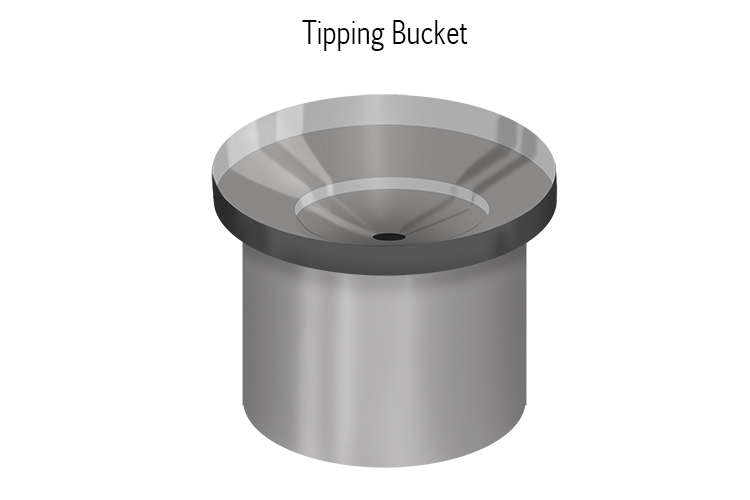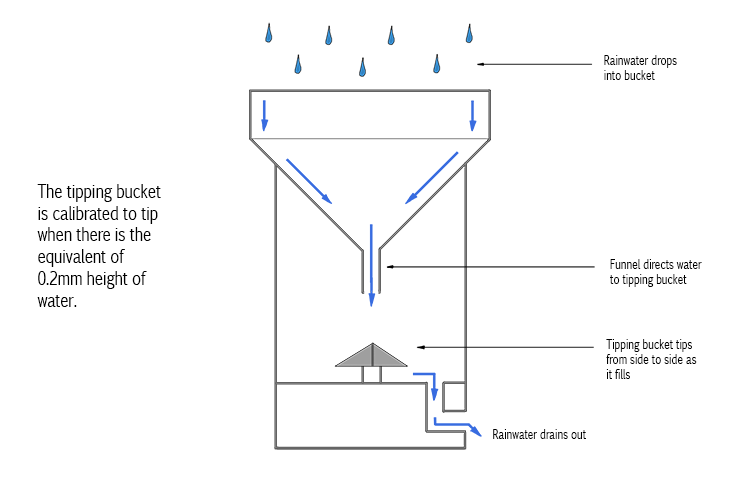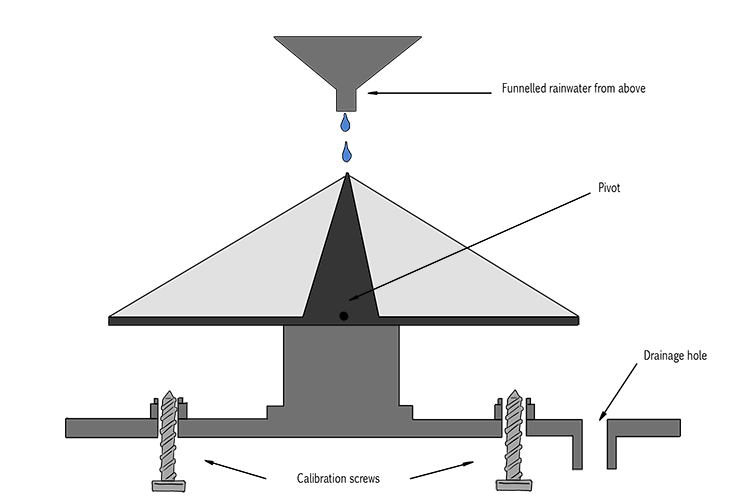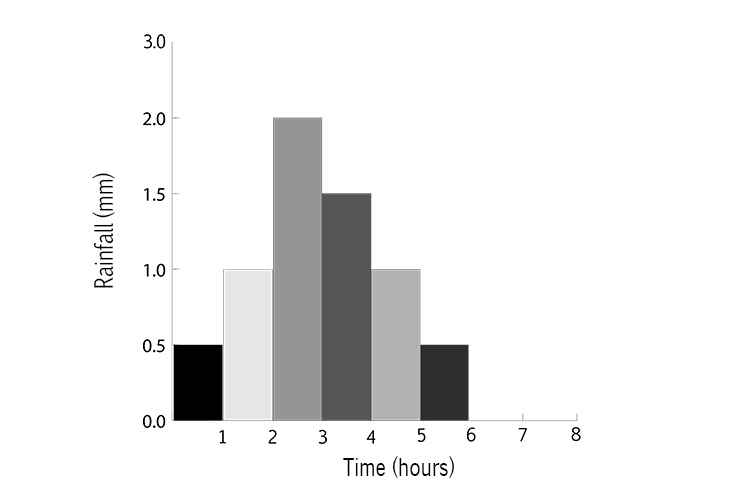Precipitation – Moisture falling from the atmosphere as rain, hail, sleet or snow
(Pronounced pruh-si-puh-tay-shun)
To remember the meaning of the term Precipitation, use the following mnemonic:
The purpose of sipping at the tasting station (precipitation) was to see if snow, hail and rainwater had different tastes.

Precipitation is a form of water from the atmosphere. It is a term used in meteorology (the study of the weather) and includes rain, snow, sleet, ice pellets dew, frost, and hail.
Each of these is formed by condensation from water vapour in the atmosphere and falls under gravity.
NOTE: Fog and mist are not precipitation but suspensions of water droplets that obscure your vision. In other words, they are not falling under gravity, but are suspended in the air.
To measure rainfall, weather forecasters use a tipping bucket:

The tipping bucket is left outside and captures rain to measure.


There are physically two buckets. When one of the buckets fills up to the equivalent of 0.2mm of water, that bucket tips, allowing the second to fill. Every time the buckets tip, they send an electrical signal to a computer to record how many times this happens. Computers can then easily work out how much rain falls in any set period of time, for example:
Slight rain= 0.5mm per hour
Moderate rain= Greater than 0.5mm per hour but less than 4.0mm per hour
Heavy rain= Greater than 4.0mm per hour but less than 8mm per hour
Very heavy rain= Greater than 8mm per hour
Weather forecasters then put this information on a graph:





